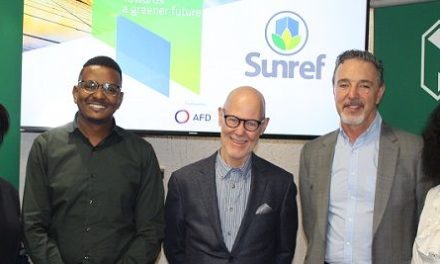
Growing a green culture
Namibia together with all other African countries contribute less than 3% to the total green house effects but are however the most affected by the impacts of climate change. To prevent global average temperature rise, new regulatory frameworks, laws, policies and reforms are needed to reduce global greenhouse gas emissions. This is however proving difficult to attain as many African countries, including Namibia, lack comprehensive Policy Frameworks that guide the integration of climate change adaptation into broader perspectives. According to Philip Mrema, Programme Officer of Forest and Climate Change at the Pan African Climate Justice Alliance (PACJA) based in Kenya, adaptation decisions need to be taken at both levels, top to bottom and bottom to top. He said financial assistance for adaptation programmes is urgently needed for people on the ground. “We need local solutions for local problems and we need to govern and utilize the little resources we have left,” said Mrema. Mrema said communities such as the pastoralists living in Somalia are already experiencing the harsh effects of climate change. “Climate change has forced families to split, leaving children to fend for themselves and others to drop out of school. Traditional ways of dealing with tough times are long gone and are no longer enough,” he said. Although a comprehensive approach towards mitigation is necessary to support mitigation policies and activities for countries with existing high greenhouse gas emissions, countries like Namibia require adaptation measures that can reduce vulnerability, build resilience to the unavoidable impacts of climate change and help the country adjust to expected change. “We need to ask ourselves, how do we adjust to the current situation? Many African countries need adaptation needs because the problem is already here so we need to come up with ways of reducing it,” Mrema noted. In Namibia, it is usually those who are poorest who are most vulnerable and therefore most likely to require the greatest adaptation needs. A comprehensive approach towards adaptation supports climate-resilient development and sustainable livelihoods and usually involves support for technical measures aimed to build resilience by primarily targeting the physical infrastructure of the country. Examples of irrigation systems have already been implemented in the country and include the Community Based Adaptation to Climate Change Pilot Programme which introduced the Container Cultivation Micro-drip irrigation system, an initiative that allows individuals to grow their own vegetables in a very efficient way in otherwise degraded soil. The self-help approach assists communities to ensure water security, the use of harvested flood and rain water to irrigate vegetables and fish farms, improve dry land crop production and promote the use of improved and new crops. As this project grows in extent and number of participants, its level of success continues to improve. This project has already made many families self-sufficient in term of their vegetable needs.













































